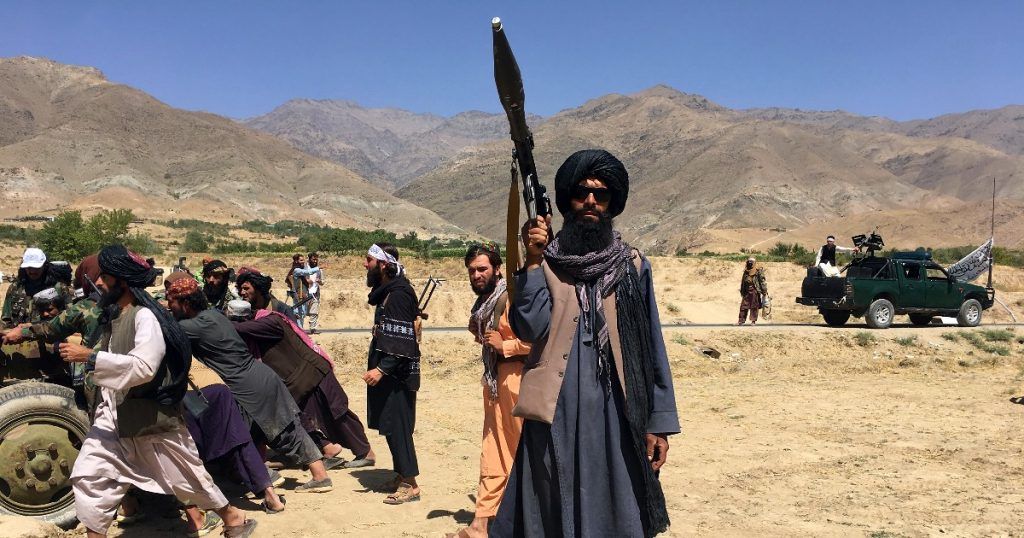Taliban increasingly eager to show their alleged ability to benefit the more than 40 million inhabitants of theAfghanistanhave begun to push the accelerator pedal on a work that threatens to undermine the fragile water balance central asian. On the other hand, the benefits of the initiative for i growers Afghans would be undeniable. The work in question is the Canale Qosh Tepaan infrastructure that will allow part of the river’s water flow to be removed Amu Darya, the main waterway in the region, to ensure better irrigation for over 500,000 hectares of Afghan territory. Thousands of people are working on the canal, which once completed will be almost 300 kilometers long, an effort also put in place to guarantee all the image return possible to the fundamentalist movement that returned to power in Afghanistan in August 2021.
As mentioned, the Amu Darya is the main regional river and an irreplaceable source of water for all the countries touched by its 2,650 kilometres, despite the fact that the flow that characterizes it has decreased in recent decades. The stream starts in the mountains of Pamir on the border between Tajikistan and Afghanistan, before crossing theUzbekistan and the Turkmenistan to finally arrive near what remains of the Lago D’Aral. The Uzbek authorities, among the most conciliatory towards them internationally since the Taliban’s rise to power, are the most concerned by the possible creation of the Qosh Tepa canal: in recent days a delegation of Tashkent has come to Afghanistan to try to find one mediation, given that the greatest impact of the work would fall on the shoulders of the Uzbek peasants. In words, the Taliban’s willingness to cooperate with its neighbors in accordance with international standards has emerged. A curious position, considering that Afghanistan is not a signatory to any regional or international agreement on the use of water basins. A situation that leaves the leaders of Kabul all possible leeway, to the detriment of regional neighbors.
The climate regarding water management in Central Asia is currently under control, but in the very recent past there have been flare-ups that have brought to the brink of guerra some of the republics of the area. Until 2016, the year of Uzbekistan’s rise to power Shavkat Mirziyoyevopen to regional cooperation, tension has risen particularly between the country and Tajikistan regarding the implementation of the diga Rogun. Under construction by the Italian Webuildonce completed (we are talking about 2028), with its 335 meters, it will be there tallest dam in the world and will allow Tajikistan to produce 3,600 megawatts of electricity. Until the disappearance of Islam Karimov in 2016, Uzbekistan strongly opposed the work for fear of domestic water fallout of the infrastructure, coming one step away from responding using the military way to a threat perceived as existential. Another more recent case also involved Tajikistan, this time in a military confrontation with the Kyrgyzstan which in April 2021 he left behind dozens of victims. Caused by wider border issues, the very heavy clashes were also linked to the dispute over the management of numerous water basins on the border between the two countries which still awaits an official demarcation.
On the other hand, Central Asia has always been divided in two: Tajikistan and Kyrgyzstan rich in water resources and Uzbekistan, Kazakhstan and Turkmenistan with a huge endowment of raw materials such as petrolium e natural gas but forced to deal with a constant shortage of water. Also for reasons of political domination, the Soviet bureaucracy developed an agricultural sector which led these last three countries to become employees from the first two to irrigate the crops of cotton increasingly widespread. A system of interdependence that held until the dissolution of theUSSRwhen the unprecedented margins of maneuver in the hands of the local autocrats have generated the current more or less latent tension.
Returning to Afghanistan, the country is historically afflicted in turn by a water shortage aggravated by the disastrous state of the deposits and the internal transport infrastructural network. If we add to this that the Taliban have assigned some key positions in the environmental sector to mullah without any understanding of climate issues or the concrete management of raw material precious as water, the risk that the Afghan population runs is well understood. It must be said that, never as in the case of the Qosh Tepa channel, the situation must be analyzed by grasping its nuances. The work is very important for the Afghan agricultural sector, but it has the geopolitical potential to bring back water-related incidents in the region to the headlines. Equally important is to understand whether the recent announcements relating to the work by the Taliban are not simply linked to the latter’s desire to up the ante with neighboring countries, to obtain immediate compensation that certainly would not benefit the increasingly battered Afghan citizens .
Source: Breaking Latest


